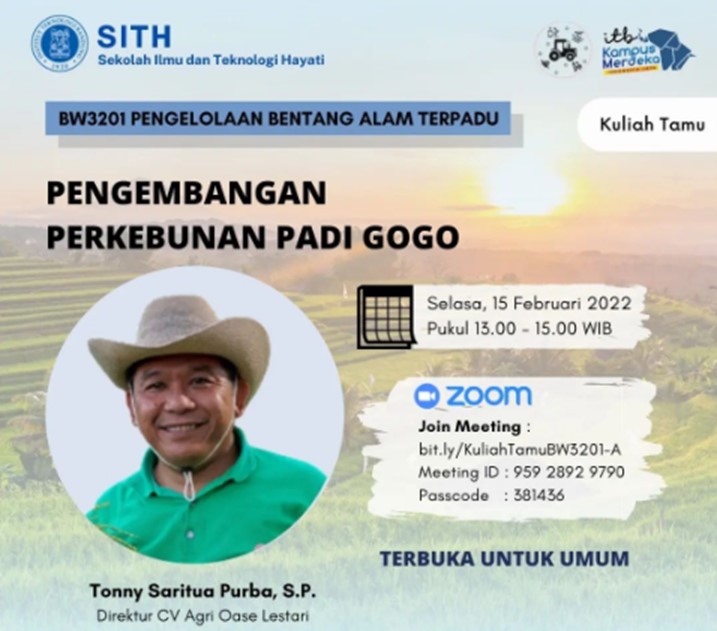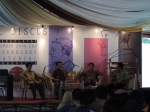Discussing the Development of Gogo Rice Plantations with ITB Agricultural Engineering Study Program
By Adi Permana
Editor Adi Permana

BANDUNG, itb.ac.id – The Agricultural Engineering Study Program in ITB SITH-R (School of Life Sciences and Technology) invited a guest lecturer for its BW3201 (Integrated Landscape Management) course. The class held on Tuesday (15/2/2022) brought up the topic "Development of Gogo Rice Plantation" by the Director of CV Agri Oase Lestari, Tonny Saritua Purba, S.P.
Tonny began his presentation by describing the different types of rice based on the three rice fields they were planted. "Rice from paddy fields can be cultivated anytime because the water supply is always available. Rice from wet fields is usually sowed at the start of the rainy season and requires reservoirs to grow. Rice from Gogo fields can also be produced at the start of the rainy season, yet they can thrive on dry grounds that are common in Indonesia." Due to this, Gogo grains are highly prospected in the country.
Gogo paddies are mostly cultivated by adding biological fertilizers to ensure soil fertility. On the other hand, chemical fertilizers and pesticides are used for their growth and nutritional needs. Thus, both usages of biological and chemical fertilizers must be done separately because of their different functions.
Besides its ability to grow on drylands, Gogo grains can be processed and cooked into premium rice, which is a great substitute for regular rice to treat diabetes. Recently, it has received attention from both the government and society. Its yielding process–which is performed with a combined harvester–was attended by Aburizal Bakrie and the Governor of Lampung.
Cultivation of Gogo grains can be implemented in used plantation sites and dry regions with low precipitation. Many provinces in Indonesia have farmed this crop, one of which is Lampung, the fifth largest rice producer in the country.
Because of its potential to support national food security, there is an increasing urgency to research and develop Gogo grains as soon as possible. The agricultural sector improved by 2.08% in the fourth quarter of 2021. Furthermore, the National Development Agenda for 2022-2024 states that the government will prioritize programs that contribute to the growth of food availability, accessibility, and quality- the Gogo grains are no exception for them.
Reporter: Yoel Enrico Meiliano (Food Engineering, 2020)
Translator: Ruth Nathania (Environmental Engineering, 2019)

.jpg)
.jpg)
.jpg)
.jpg)
.jpg)

